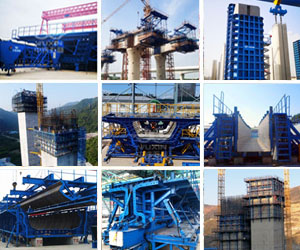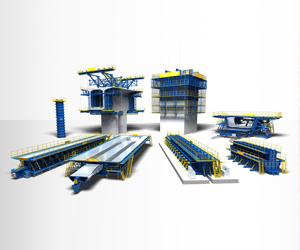Precast viaduct formwork
Precast viaduct formwork refers to the specialized molds or systems used to produce precast concrete segments for viaducts. These segments are manufactured off-site in controlled environments and then transported to the construction site for assembly, usually using cranes or launching gantries.
Components of Precast Viaduct Formwork:
Formwork Molds:
Steel Molds: Durable and reusable, typically used for precise and repetitive production.
Modular Systems: Adjustable molds that accommodate different sizes and shapes of segments.
Casting Beds:
Horizontal platforms designed to hold the formwork molds and support the concrete pouring and curing process.
Tensioning Systems:
Incorporated into the formwork for prestressed concrete elements, where steel cables or tendons are tensioned to improve the segment's strength.
Hydraulic Systems:
Used to open, close, or adjust the molds for easy removal of the finished segment and efficient resetting for the next cast.
Heating and Curing Systems:
Maintain optimal temperature and humidity for proper concrete curing, ensuring quality and consistency.
Alignment Systems:
Ensure precise dimensions and alignment of segments to match the viaduct's design and structural requirements.
Benefits of Precast Viaduct Formwork:
Quality Control: Ensures high precision and uniformity due to controlled production environments.
Speed: Allows simultaneous on-site assembly and off-site segment production, accelerating the construction timeline.
Reduced Waste: Efficient use of materials and minimized onsite spillage.
Safety: Reduced on-site labor and associated hazards.
Applications:
Precast viaduct formwork is commonly used in large infrastructure projects like:
Highway and railway bridges.
Elevated metro or train systems.
Urban flyovers and interchanges.









